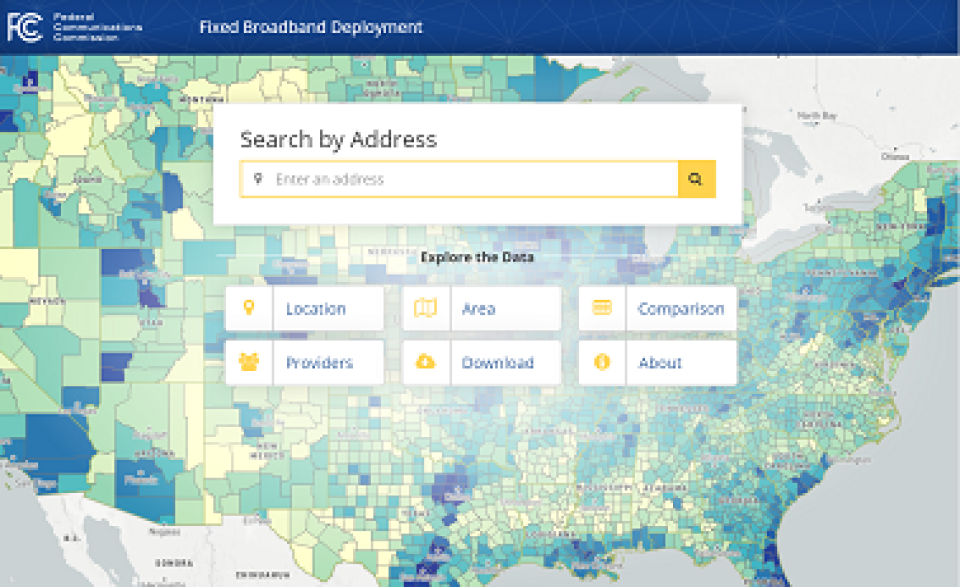
Fast, affordable Internet access for all.

The BEAD Notice of Funding Opportunity (NOFO) released by NTIA is packed with guidance and regulations for how tens of billions in new funding with be spent. Reading the rules closely gives us a sense of who they might advantage, at least early on, and the line NTIA is trying to walk in giving the money the most bang for its buck while also heading off abuse.
On a recent episode of the Connect This! Show, Christopher Mitchell, Travis Carter (USI Internet), Kim McKinley (UTOPIA Fiber), and Doug Dawson (CCG Consulting) tackled what we know, what we don't, and what's likely to happen as states begin to file their letters of intent to participate in the program. Watch the shorts below to see them tackle Congressional intent, supply chain requirements, who we think will apply for these subgrants, and WISPs and overbuilding.
Watch the full episode here.
Subscribe to the show using this feed on YouTube Live or here on Facebook Live, on find it on the Connect This! page.
Email us broadband@muninetworks.org with feedback and ideas for the show.
In this episode of the Connect This! Show, co-hosts Christopher and Travis Carter (USI Fiber) are joined by Kim McKinley (UTOPIA Fiber) and Doug Dawson (CCG Consulting) to kick off the new year.
The panel will dig into the recently released Final Rules released by the Treasury on use of the Rescue Plan dollars, before diving into some regional developments in New York and Los Angeles. They'll end by sharing some thoughts about how the broadband landscape is likely to shape up during the coming year.
Subscribe to the show using this feed on YouTube Live or here on Facebook Live, or visit ConnectThisShow.com
Email us broadband@muninetworks.org with feedback and ideas for the show.
Watch here, or below.
Join us live on Thursday, November 18th at 5pm ET for Episode 26 of the Connect This! Show, where co-hosts Christopher and Travis Carter (USI Fiber) will be joined by Kim McKinley (UTOPIA Fiber) and Doug Dawson (CCG Consulting) to talk about all things related to the recently passed Infrastructure Investment and Jobs Act, inside of which is more than $42 billion in broadband infrastructure money in the Broadband Equity, Access, and Deployment (BEAD) Program.
The panel will tackle all the burning questions you have. How does this fit in with the other pots of infrastructure money? What's the long-term outcome of such a large commitment likely to be? What's the timeline for rulemaking? How can communities put themselves on a path to win grants?
They'll also talk about a new ILSR report, published last week, which analyzes price and billing transparency for Internet service between different types of providers.
Subscribe to the show using this feed, or visit ConnectThisShow.com
Email us broadband@muninetworks.org with feedback, ideas for the show, or your pictures of weird wireless infrastructure to stump Travis.
Watch here or below on YouTube Live, via Facebook Live here, or follow Christopher on Twitter to watch there.
As House GOP leaders ask the Government Accountability Office to audit the U.S. Department of Agriculture (USDA) ReConnect program because of concerns federal funds are being used to “overbuild,” Democratic leaders in the House and Senate have filed legislation that aims to build broadband infrastructure on a national-scale.
The Accessible, Affordable Internet for All Act is a bill that harkens back to when the federal government – through FDR’s Rural Electrification Administration, established in 1935, and the Rural Electrification Act, passed by Congress in 1936 – invested in local cooperatives and brought electricity to the abundance of Americans still living in candle-lit homes without electrically-powered refrigerators.
The proposed legislation may well frame the Democratic agenda on broadband moving forward, as the Biden administration enters the White House in January. It’s a bold bill that has garnered the support of a who’s-who of broadband experts and advocacy organizations from Public Knowledge, the National Consumer Law Center and New America Foundation’s Open Technology Institute to the Benton Institute for Broadband and Society, the Electronic Frontier Foundation, and the National Digital Inclusion Alliance.
Breaking it Down
There’s a lot to unpack in this bill, which is why we are publishing a series of posts exploring the major sections contained in the proposed legislation. This first installment is the 30,000-foot view. Forthcoming posts will examine the legislative details where the devil – or the better angels – can be found.

